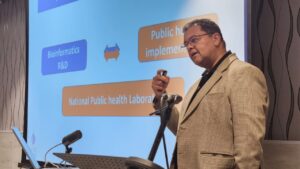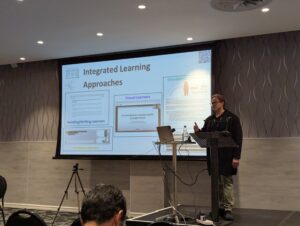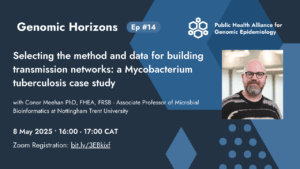Organisational resilience is championed across various sectors such as urban planning, ecology, extractive industries, and healthcare for a system’s ability to continue to meet its objectives in the face of challenges.
With regards to resilient cities, cities embody productivity and are seen as functional elements of the global political economy. Various ideas and recommendations are highlighted as criteria to resilient urban planning and directions are given for future research in sub-Saharan Africa and resilient urban-development in Asia, America, Central Europe, Western Europe and Oceania.
Climate change adaptation and resilience is vaunted for coastal regions, dryland systems and semiarid regions, deltas, glacier- and snowpack-dependent river basins across Africa and Asia. This is particularly true to maintain balance in ecosystems and especially for an important element for human and animal survival – food production. For instance, to enhance resilient African agricultural systems, climate services ought to be incorporated into national policies to avert the threats of climate change and there must be an increased support for production of African indigenous vegetables.
The extractive industry also highlights how stakeholder engagement and buy-in from companies and the surrounding communities are key in developing and implementing sustainable plans in South American and African contexts.
But what is organisational resilience in healthcare? In the context of emerging and known public health threats, how is resilience fostered?
There is no universal definition of resilience in empirical health research. There are various connotations due to the varied meanings that are ascribed to the term. This may be attributed to the fact that the term “resilience engineering” was borrowed from safety science and translated to healthcare. Resilience engineering is concerned with organisational processes that enable a team or unit to adapt successfully. Three premises underpinning resilience engineering include: ‘resilience at organizational level’; ‘variability in the environment creates the need for adjustment’; and ‘the need for adjustment and the ubiquity of adaptation means that there is a difference between work as imagined (WAI) in protocols, procedures and targets and work as done (WAD) in practice’.
Some review papers in healthcare have illustrated the evolution of the term resilience engineering by using terms such as “resilient healthcare”, “planned, adaptive and everyday resilience”. Resilient healthcare is the application of the concepts and methods of resilience engineering in the healthcare field, specifically regarding patient safety. Planned resilience is a function of planning for and preparing for future crises; adaptive resilience speaks to adapting to chronic stresses and acute shocks and everyday resilience is the resilience of health systems to routine and chronic stress.
Public health threats, that fall in different classes due to different characteristics and attributions, become ideal to assess resilience in healthcare. Looking at public health emergencies of international concern (PHEIC), a PHEIC is a formal declaration by the World Health Organization of ‘an extraordinary event which is determined to constitute a public health risk to other States through the international spread of disease and to potentially require a coordinated international response’. This includes events such as H1N1 influenza, Ebola, poliomyelitis, Zika and COVID-19. Antimicrobial resistance (AMR) is another classification of a public health threat, which is one of the top 10 global threats facing humanity ‘as the misuse and overuse of antimicrobials are the main drivers in the development of drug-resistant pathogens’ and ‘without effective antimicrobials, the success of modern medicine in treating infections, including during major surgery and cancer chemotherapy, would be at increased risk.’
Zooming into Ebola, COVID-19 and AMR, challenges and opportunities in fostering organisational resilience are reported. Prior to the 2014–2015 Ebola outbreak, infection prevention and control (IPC) activities in Liberian healthcare facilities were basic with ‘neither national IPC guidance nor dedicated staff at government and health facility levels to ensure implementation of best practices’. A ripple effect of unintended consequences also spread across other sectors of economic significance such as agriculture and regional trade that resulted in food shortages and a rise in unemployment, respectively. ‘Substantial external financing’ was seen as a need ‘to build stronger national and subnational health systems’ and immense financial support came through different channels such as the International Monetary Fund, World Bank, European Union and African Development Bank. The deployment of international medical experts to support local healthcare facilities, resilient leadership through the influence of political and cultural leaders over the public to adapt and cooperate to national and international guidance in controlling the epidemic and further training of healthcare workers in IPC and relaying of standardized messaging on Ebola to the public were contributory factors to the success of the concerted national and global efforts in containing the epidemic.
Resilient leadership in the context of COVID-19 has been described as “paradox work” as leaders face ‘contradictory tensions’ and ‘apparent contradictions’ that push them to be ‘reactive and adaptive’ in ever changing circumstances. In the early months of the COVID-19 pandemic, health systems in Asia that have ‘appropriate containment measures and governance structures; took steps to support health-care delivery and financing; and developed and implemented plans and management structures’ but were uncertain if they could continue to function properly with the health emergency. A downward spiral of sub-Saharan economies post COVID-19 is anticipated if ‘urgent and timely domestic and international interventions’ do not exist.
Exercise of corporate social responsibility for COVID-19 is one mechanism to alleviate the impact of COVID-19. For example, some private companies in Spain donated ‘health, food, and research funds, and temporarily transferred the necessary infrastructure, among other action’. In the Philippines, such efforts have been proposed where private companies could purchase COVID-19 vaccines for their employees and ‘the government can remove taxes on these companies for this transaction only’ as a way of strengthening the national vaccination program.
Fears of unintentional exacerbating AMR are also highlighted in managing COVID-19, as treating physicians may prescribe antibiotics more often to control suspected underlying bacterial infections in patients with COVID-19 infection. Sustainable and resilient antimicrobial stewardship (AMS) programmes may be built through promotion of capacity building in AMR, reciprocal and long-term partnerships between high-income and low- and middle-income countries and adequate funding.
With the cases described above, the availability of resources such as training and financial resources, coupled with multi-sectoral collaboration and resilient leadership – become major enablers of organisational resilience especially when healthcare systems face public health threats. These strengths may be nurtured and reinforced especially across African health systems that are historically labelled as ‘fragile’ and beyond.



